The centaur homeplanet has a 51 degree axial tilt, meaning that during the Northern winter, the South pole bakes, and vice versa. Most of the settled regions are in the equatorial sweet spot where the sunlight is always oblique, but it's not tundra half the year and nightless desert for the other half. Enormous mountain ranges, taller than most on Earth, divide much of the continent's interior. These ranges are impassible to much of the planet's life, because the air further up their slopes is too thin to breathe.
The recently formed megacontinent forms a continuous loop around the globe, and nomadic groups generally walk the entire loop on their migration. Large clans tend to take two years to complete the loop, while small younger groups can complete one loop a year. Nightchasers are the groups that follow the planet's winters, entering the polar areas during their spring seasons. Sunchasers follow the planet's summers, entering the polar areas during their autumn. The nomads mostly travel along the East Ocean's coast, so that's where the most geneflow happens in the settled groups.
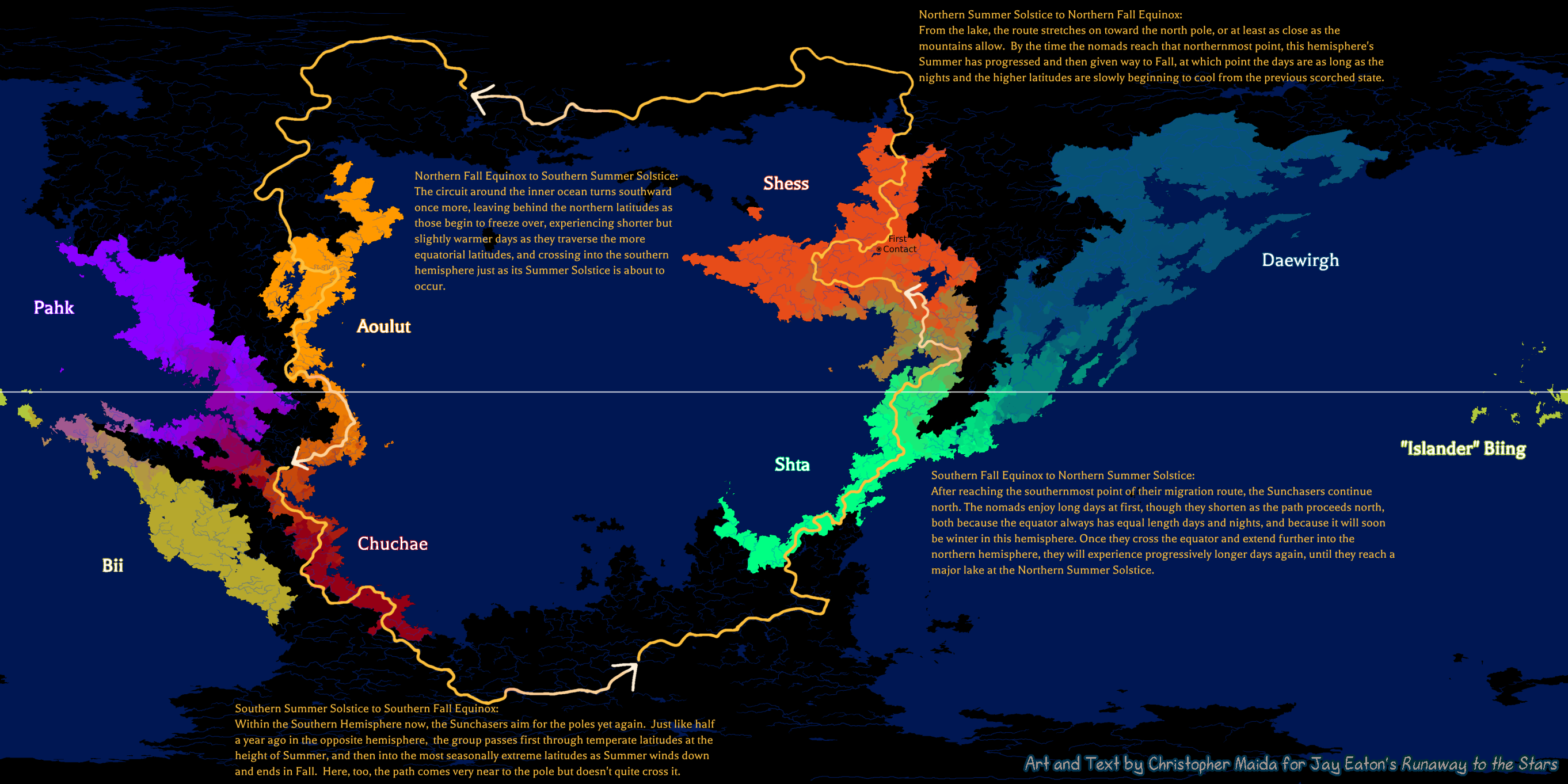
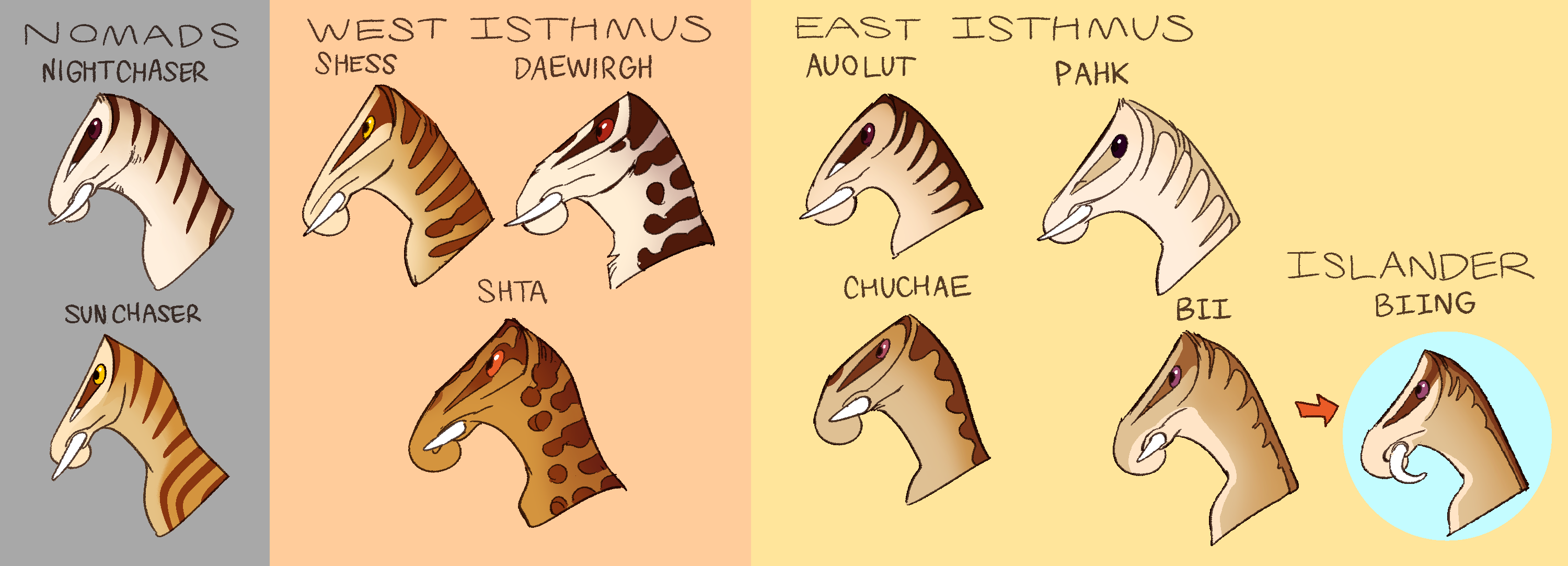
Most of these names are derived from the names that the Shess call the other ethnic groups, since that's where the majority of alien embassies are on the centaur homeplanet and thus where most of the Jovian English loanwords come from. Note that the ethnic regions are not the same as political regions-- because of the clan family system centaur polities are not divided up the same way human polities are, but each of these regions contain many political entities (plenty of whom do not agree with each other)
The majority of centaurs living in space are from the nomadic ethnicities. The Shess call them Skychasers.
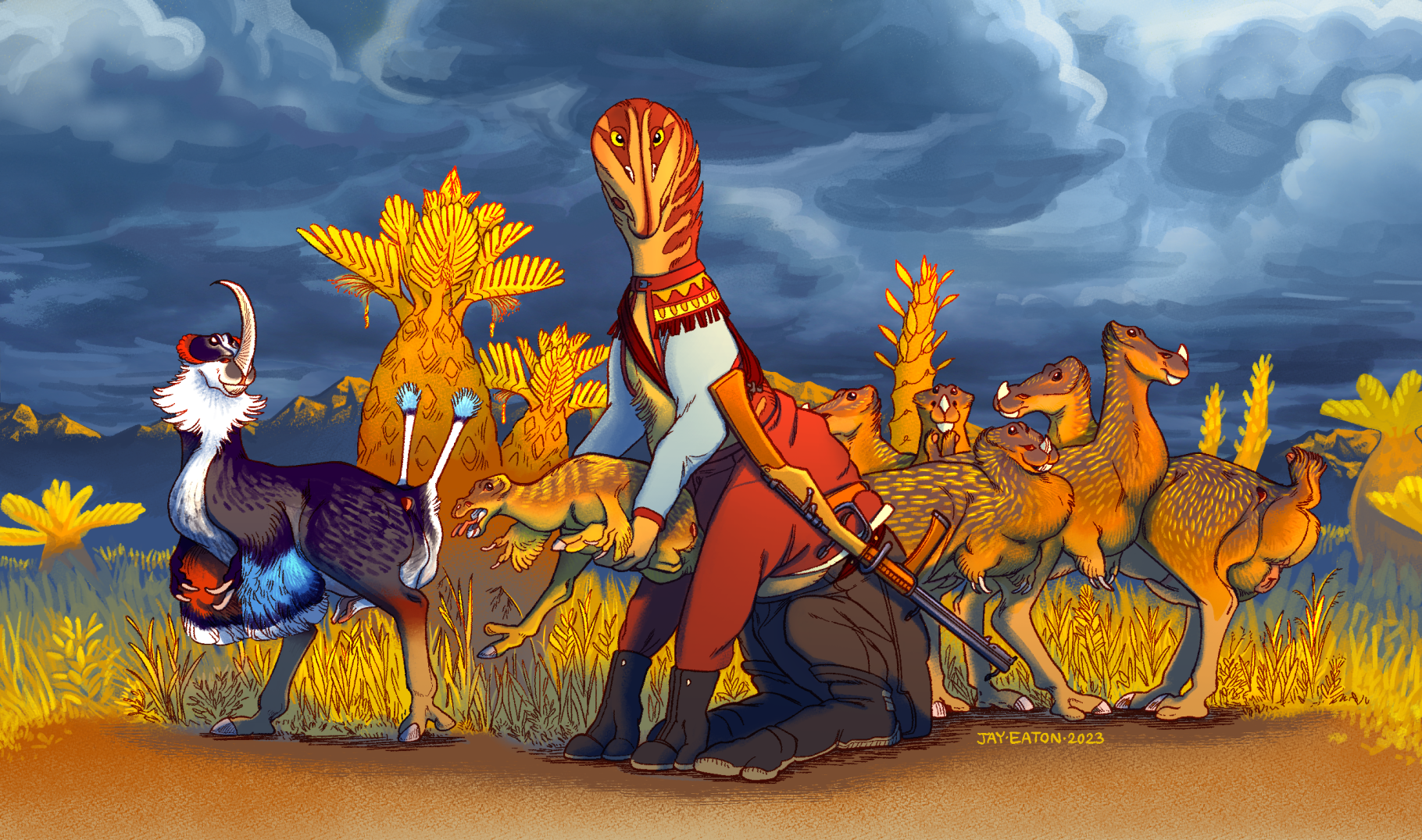
A centaur from the Shess ethnicity poses with their clan's small flock of Tep, a livestock animal that is farmed for its meat and cheese-like edible silk. To their right are the hens of the flock with their large silk glands and spinnerets, in the centaur's arms is a distressed yearling newly weaned off silk, and to their left is the rooster with flashy (but useless) display spinnerets. In the background is the tough yellow chaparral flora of the harshly seasonal Shess peninsula. Hanging off their fore shoulder and hooked to a belt on their rear waist is a 2 meter long black powder rifle, characteristic of centaur firearms developed before first contact. The shepherd keeps it with them while herding the flock to ward off wildlife that competes with or likes to eat Tep. It's also useful for bagging game meat.
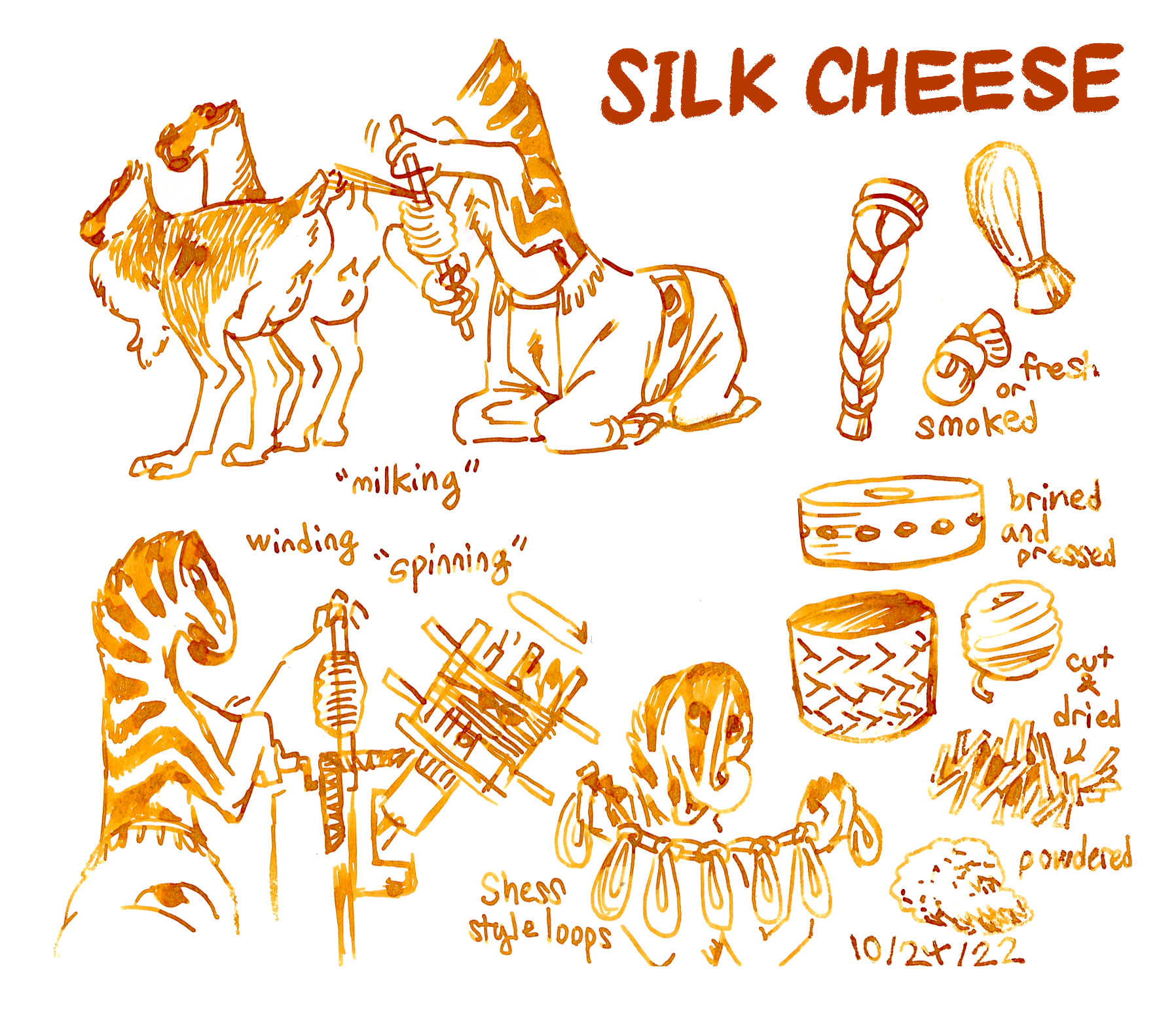
Tep are highly valued for their “string cheese,” a nutritive silk produced by the livestock that serves a similar function to mammalian milk, i.e. it feeds the kids. It has a greasy texture and contains a lot of high-calorie macromolecules packed inside structural sheaths. The texture is similar to chewing on a fibrous plant stem. The raw silk is commonly knotted and boiled in brine; then either eaten fresh or preserved via smoking, salt packing, pressing, dehydration, etc.
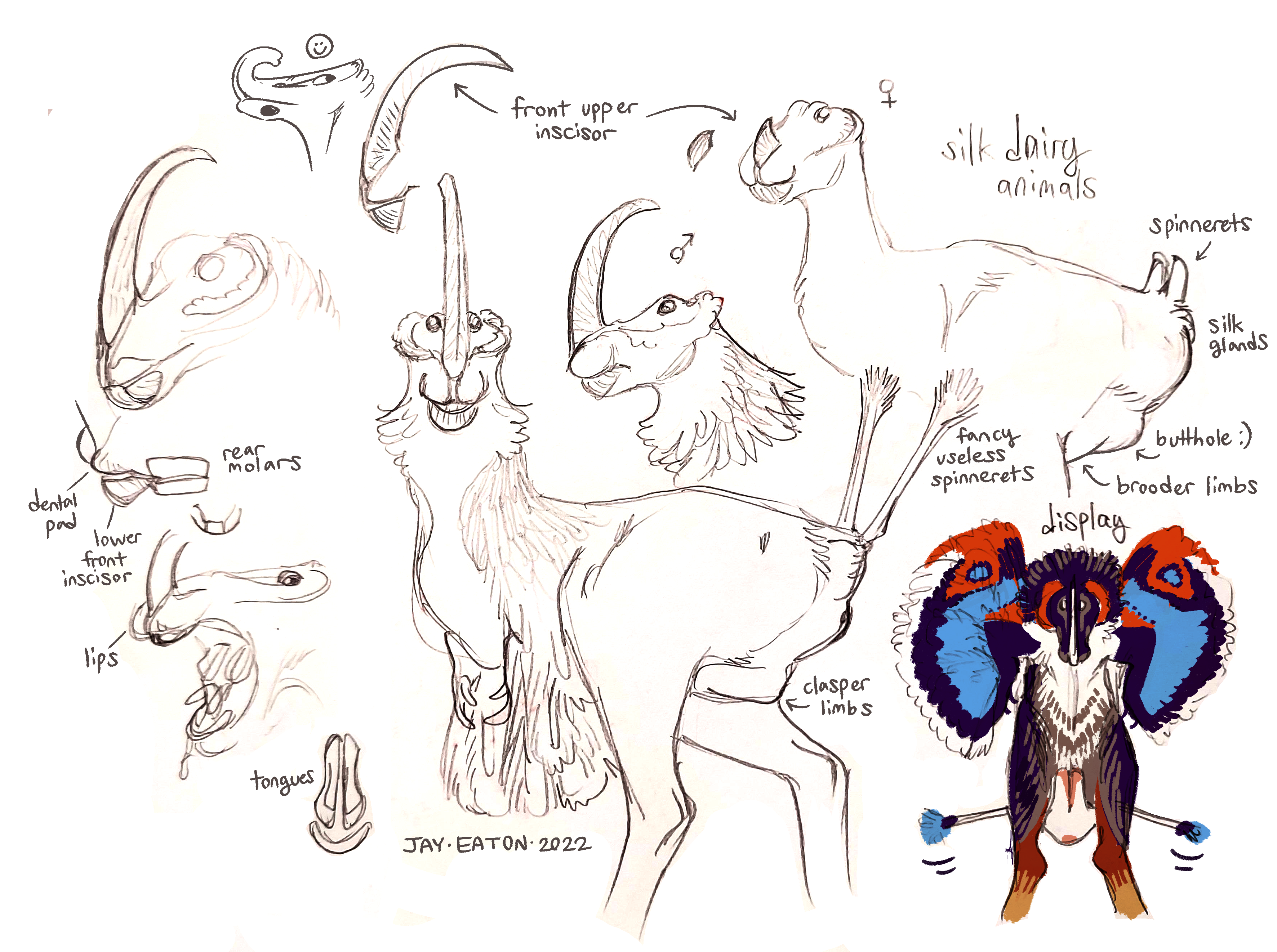
Tep are from a viviparous sister clade of centaurs (who also fed their young nutritive silk) where the rear limbs evolved into claspers in males and a pouch in females. Centaurs have bred this species specifically to overproduce silk after pregnancy so that they can harvest and eat it.Their front tooth is also a nose sword, which centaurs like because it looks like a trunk smile to them.
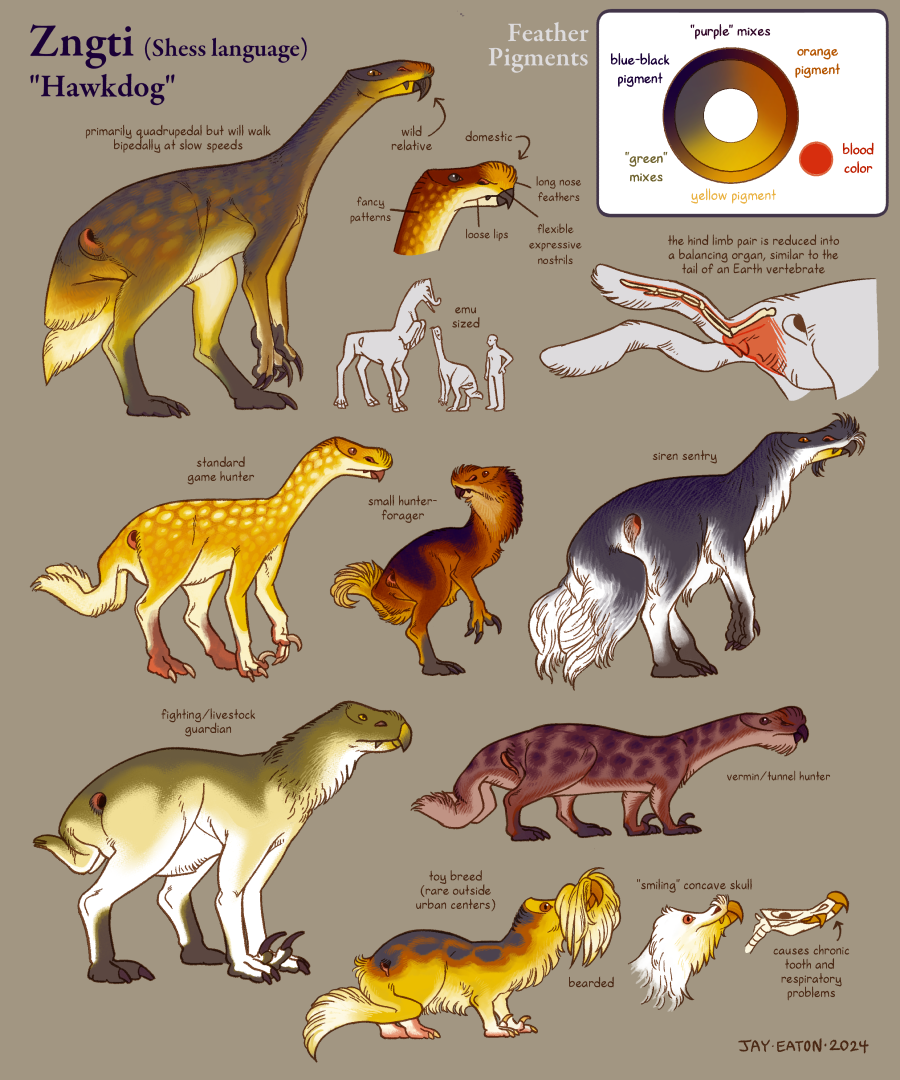
This animal is called Zngti or Jngti on the southern Shess peninsula, and Anglophone humans sometimes refer to them as "centaur dogs" or "hawkdogs." They are an omnivorous predator that occupied a niche similar to a fox prior to domestication, and now fill a variety of roles in centaur settlements. They descended from a viviparous sister clade of centaurs where the hind limbs developed into a balancing organ similar to the tail of an Earth vertebrate, but did not specialize into claspers and a pouch such as in Tep (the silk dairy livestock).
Zngti do not have a strong pack coordination instinct and are not commonly used for hunting large game or herding livestock. In some ways they're comparable to domestic cats, often left unsupervised around food storage or crops to hunt vermin, but their territoriality also makes them useful for livestock defense or sentry roles.
Although there are no commonly held breed standards, different regions may have one or two specialized varieties for different functions. For game hunting, varieties tend to have a build similar to the wildtype but with flashy coat patterns. Tunnel hunting and vermin control varieties tend to have stout bodies and a bearded face to protect them from clawing prey and dirt entering their eyes and nostrils. Bulky guardian breeds are variously used to defend livestock, property, and children from threatening wildlife or strangers. Sentry alert breeds will raise a continuous "siren" howl through their excurrent nostrils in response to intruders. Most Zngti are work animals first and companions second, but in some urbanized regions toy breeds can be found. Derived from squat vermin hunting varieties, they are usually brightly colored with concave skulls that make them resemble a trunk-smiling centaur.
Although to centaurs Zngti are relatively small animals, they are often heavier and taller than humans. Some guardian breeds can be as large as a cow.
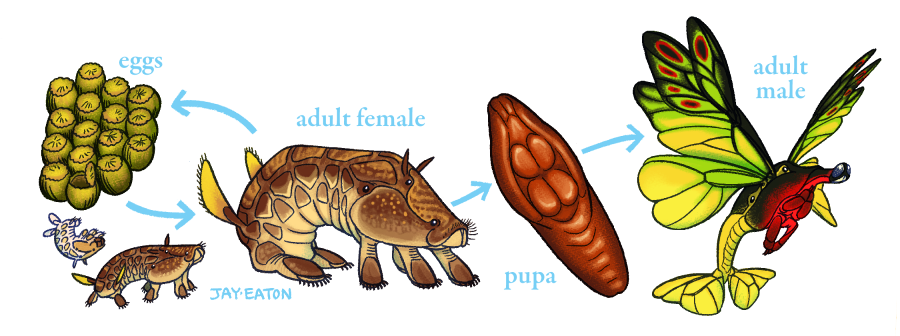
There are no flying vertebrates on the centaur homeplanet, the largest flying animals are invertebrates. This clade has hydraulic limbs and most have a protogynous hermaphroditic lifecycle, where they are females for the first part of their life and then become male after pupation. This final life stage is usually the one that can fly. The largest of these fliers is not much bigger than a Canada goose.